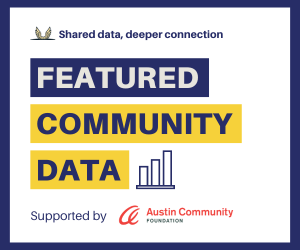Newsletter Signup
The Austin Monitor thanks its sponsors. Become one.
Most Popular Stories
- U.S. accuses six landlords of rent price fixing. See which apartments they own in Austin.
- Objections arise over Project Connect’s plan to use parkland
- Advocates urge immigrants in Austin to plan – but not panic – over new Trump orders
- New areas at Enchanted Rock could open as soon as this fall after park more than doubles in size
- Lady Bird Lake’s water levels dropped (again), raising questions about dam’s integrity
-
Discover News By District
Riley working on new model of planning for Airport Boulevard
Friday, October 9, 2009 by John Davidson
City Council Member Chris Riley thinks there’s a way to revitalize the struggling commercial corridor along Airport Boulevard near Highland Mall and that it is with a form-based code.
What is a form-based code? Simply put, it refers to a method of regulating development to achieve a specific urban form. In this case, a high-density, mixed-use, walkable commercial corridor that links major destinations like the Crestview Station and Highland Mall.
It’s part of a movement that some call “new urbanism,” which is really just the old urbanism of the early 20th century: cities and towns built to a human scale — for pedestrians, not automobiles — in which you could walk from your home to work, to the store, to the theater, or to a restaurant.
The task of creating such communities and corridors after 50-odd years of auto-oriented design is daunting, but Riley thinks it can be done — as long as there’s ample community support. That’s why he brought together residents and business owners from the
Scott Polikov, president of Gateway Planning Group, gave a presentation on form-based code to a room of about two-dozen residents and city staffers, making the case that unless
But what’s most important for creating new development along
Exactly what that zone looks like will depend on the community: business owners, nearby residents, and other stakeholders would come together and decide what they wanted the corridor to look like, including building heights, set-backs, street and infrastructure improvements — all the usual things involved in planning and zoning.
The difference is that the same specs would apply to every property in the corridor. Property owners could then decide to change a building’s use without going through a tedious (sometimes costly) legislative re-zoning process. If, for example, the owner of a lawnmower repair shop wanted to renovate and re-open as a restaurant with residential apartments above, all he or she would have to do is submit a site plan that showed compliance with the zone’s particular requirements.
For now, plans for
And he’s optimistic that the city will get behind the effort: “I’m very encouraged that the pieces are all in place for something really positive to happen out there.”
But there’s a lot of work ahead, and the main task right now is education. According to Polikov, the problem with a form-based code approach is that residents and business owners tend to misunderstand it. “People are frustrated with the current system and they think we’re just trying to bring more of the same,” he said. “The irony is that we’re trying to unwind it and go back to the approach we used to take, which is to allow the entire neighborhood to develop its sense of what the place is like and then write the rules for property owners so they can plug into that broader vision … and make money.”
The making money part is, in Polikov’s view, the great advantage of a form-based code because everybody wins. Residents get better neighborhood businesses closer to them while preserving the character of the neighborhood, landowners get reasonable assurance that if they invest in their property then businesses nearby will follow suit, and the city gets reassurance that their investment in infrastructure will yield handsome returns in the form of a greater tax base.
Polikov’s firm has implemented this kind of form-based code zone in
You're a community leader
And we’re honored you look to us for serious, in-depth news. You know a strong community needs local and dedicated watchdog reporting. We’re here for you and that won’t change. Now will you take the powerful next step and support our nonprofit news organization?










